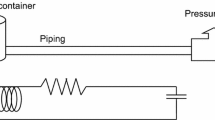Abstract
Mechanically driven catheter tip echo systems presently operate with a flexible shaft. Rotation power from a proximally mounted motor is transferred via this shaft to the rotating echo tip element. In practice, the tip does not identically ‘follow’ the rotation of the motor due to low torsional rigidity of the shaft, which creates artifacts in the displayed cross-sectional image. In order to visualize curved arteries such as the coronary arteries, a compromise is necessary between the required low flexural rigidity and a high torsional rigidity.
In this report the image artifacts of mechanically driven systems are presented that are related to catheter tip motion. The properties of a spiral drive-shaft and a solid drive-shaft have been compared for rotational speed of 1000 and 3000 revolutions per minute (rpm), and for straight as well as strongly curved catheters. By way of example, the periodic angle error varies from 25 degrees top-top in a straight catheter to 80 degrees top-top when the catheter is curved with R = 20 mm, using a spiral drive-shaft at 1000 rpm.
Similar content being viewed by others
Author information
Authors and Affiliations
Rights and permissions
About this article
Cite this article
Hoff, H.t., Korbijn, A., Smit, T.H. et al. Imaging artifacts in mechanically driven ultrasound catheters. Int J Cardiac Imag 4, 195–199 (1989). https://doi.org/10.1007/BF01745150
Issue Date:
DOI: https://doi.org/10.1007/BF01745150




